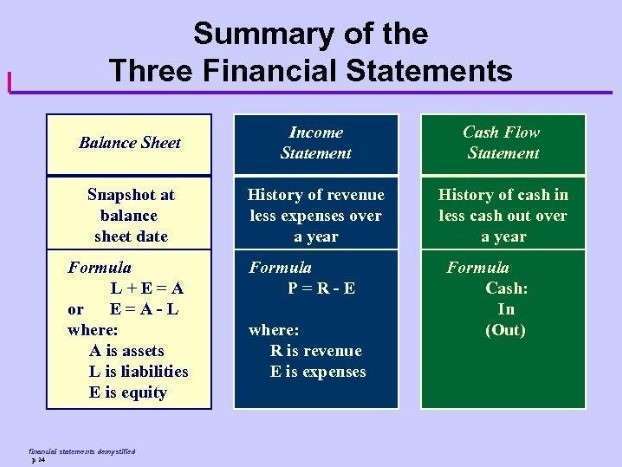
Next, we’ll move on to adjusting these accounts with journal entries. Asset accounts normally have debit balances, while liabilities and capital normally have credit balances. Income has a normal credit balance since it increases capital. On the other hand, expenses and withdrawals decrease capital, hence they normally have debit balances.
Debits and Credits
When a company makes a sale, it credits the Revenue account. Equity signifies the ownership interest in the company. It’s essentially what’s left over when you subtract liabilities from assets. When owners invest more into the business, you credit the equity account, hence, it has a normal credit balance.
Income Statement
It aids in maintaining accurate financial records and statements that mirror the true financial position of your business. Misunderstanding normal balances could lead to errors in your accounting records, which could misrepresent your business’s financial health and misinform decision-making. A liability account that reports amounts received in advance of providing goods or services. When the goods or services are provided, this account balance is decreased and a revenue account is virtual accountant increased.

What are some best practices for managing the normal balance of accounts?
As a contra revenue account, sales discount will have a debit balance and is subtracted from sales (along with sales returns and allowances) to arrive at net sales. Accounts such as Cash, Investment Securities, and Loans Receivable are reported as assets on the bank’s balance sheet. Customers’ bank accounts are reported as liabilities and include the balances in its customers’ checking and savings accounts as well as certificates of deposit.
- This makes the company’s financial activities clear and strengthens its financial reports.
- In a T-account, their balances will be on the left side.
- Normal balances ensure financial records are accurate and reliable.
- This account is a non-operating or “other” expense for the cost of borrowed money or other credit.
- Liabilities (on the right of the equation, the credit side) have a Normal Credit Balance.
- It aids in maintaining accurate financial records and statements that mirror the true financial position of your business.
- Debits and credits are an important part of financial accounting.
- This considers things like the economy, recovering from big events, and planning finances.
- It keeps the company’s financials accurate and makes sure the balance sheet is correct.
Ed’s inventory would have an ending debit balance of $40,000 and a debit balance in cash of $15,000. These are both asset accounts.He would debit inventory for $10,000 due to the new inventory and credit cash for $10,000 due to the cost. normal balance Thus, if you want to increase Accounts Payable, you credit it. If you want to decrease Accounts Payable, you debit it. In contrast, liability and equity accounts have a credit balance. Liabilities are what a company owes, like Accounts Payable and Notes Payable, and rise with credits.
Transaction #3
Similarly, you learned that crediting the Cash account in the general ledger reduces its balance, yet your bank says it is debiting your checking account to reduce its balance. Normal balance is the side of a ledger account where increases are recorded. For assets, the normal balance is a debit, while for liabilities and equity, it is a credit. An expense account is a normal balance asset account that you use to record the expenses incurred by a business. In accounting, the normal balances of accounts are the side where increases are typically recorded.
Accounting made for beginners
Assume he bought the computers with cash and his starting cash account had $25,000 in it. The Cash account stores all transactions that involve cash receipts and cash disbursements. By storing these, accountants are able to monitor the movements in cash as well as it’s current balance. With its intuitive interface and powerful functionality, Try using Brixx to stay on top of your finances and manage your growth. online bookkeeping This way, the transactions are organized by the date on which they occurred, providing a clear timeline of the company’s financial activities. If the revenues earned are a main activity of the business, they are considered to be operating revenues.

Understanding the Basics of Debits and Credits
The credit side of a liability account represents the amount of money that the company owes to its creditors. You can use a cash account to record all transactions that involve the receipt or disbursement of cash. This means that when you make a debit entry to an asset account. While a debit balance occurs when the debits exceed the credits. In reality, however, any account can have either a debit or credit balance. The format of the accounting equation (or basic accounting equation or bookkeeping equation) is identical to the format of the balance sheet.
Service Revenues is an operating revenue account and will appear at the beginning of the company’s income statement. As the entry shows, the bank’s assets increase by the debit of $100 and the bank’s liabilities increase by the credit of $100. The bank’s detailed records show that Debris Disposal’s checking account is the specific liability that increased. Let’s look at three transactions and consider the related journal entries from both the bank’s perspective and the company’s perspective. Whenever cash is received, the asset account Cash is debited and another account will need to be credited. Since the service was performed at the same time as the cash was received, the revenue account Service Revenues is credited, thus increasing its account balance.
